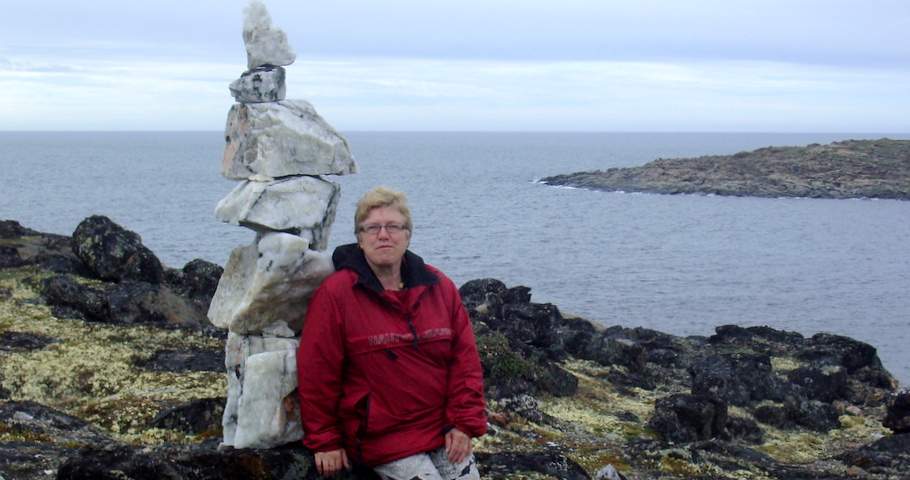Children suffer the impact of many placements
 Like their parents who were torn from their families and sent to residential schools, a generation or two later, First Nations and Inuit children are also uprooted from their communities and made more vulnerable by the impact of the many placements that do not take into account their needs. They too are torn from their culture, their language, because their parents are unable to raise them in living conditions that would support their full development. CHILDREN NEED A VOICE.
Like their parents who were torn from their families and sent to residential schools, a generation or two later, First Nations and Inuit children are also uprooted from their communities and made more vulnerable by the impact of the many placements that do not take into account their needs. They too are torn from their culture, their language, because their parents are unable to raise them in living conditions that would support their full development. CHILDREN NEED A VOICE.Poverty bears a face in Canada
Canada is the ninth richest country in the world. Yet poverty also bears a face in Canada. Increased economic and social inequalities cannot quite mask the reality of poverty, social exclusion and discrimination of certain vulnerable populations.A weakened social fabric of communities undermines social ties
Many factors contribute to weakening the social fabric of Aboriginal and Inuit communities and undermining their social ties. Rapid social changes, the gradual disintegration of families caused by family conflict due to overcrowded dwellings, poverty and marginalization clog the future prospects of children and contribute to their despair.The inefficiency of the social safety net affects children as much as their living conditions affect their health and even their behavior. Their access to quality education, healthy foods and adequate housing conditions play a vital role on the impact of their welfare.
The hardship of parenting in an overcrowded house puts their children at risk
The purpose of protection should be to keep the child in his family environment. For many Aboriginal and Inuit families, the hardship of parenting in an overcrowded house puts their children at risk. When their security or development is compromised, the children are removed from their environment. The parent who is present in court (single parenting) has a limited time to correct the situation.Overcrowding exacerbates other social conditions
In this context, there are various risk factors. Mothers already face the challenges and difficulties associated with their circumstances. Most mothers are heads of single-parent families. Inadequate living conditions, overcrowding (12-15 people in a two bedroom apartment) invisible homelessness, exacerbate other social conditions: conjugal abuse, abuse of alcohol and drugs, suicide rates six times higher than the provincial average. The suicide rate in some communities is 25 times higher than the Quebec average.Add to that, lack of job opportunities and inadequate training, all contribute to increased rates of depression, trauma symptoms and self-harm at the hand of mothers and children.
Unequal treatment of justice and insufficient human resources in social services are largely responsible for making later agreements difficult with the parents when it comes to determining the needs of their child and their ability to exercise their roles and responsibilities. Unfortunately for many mothers, social agents quickly come to elaborate a life plan that is deemed to correspond to the best interests of the child.
Children are removed from their homes and communities
The institutions, representing our society, should verify the commitment and motivation of the parents towards their children. But due to a lack of training and experience with a deficient understanding of complex situations, children are removed from their homes and communities.Consideration of the numerous stresses should be taken into account
Ideally, to meet the needs of families, resources should be identified to help them. In particular, the complexity of domestic and family abuse with its multiple effects on the functioning of families should be taken into account. Consideration of the numerous stresses affecting family dynamics is rarely done due to insufficient human resources.When the maintenance or the child's return to his parents is not possible despite the resources and services offered, a life project is prepared for the child. In this case, the judge of the Youth Division Court will recommend an alternative life project for the child. After hearing all persons concerned by the situation of the child, the judge will choose from the following alternative life projects: the child's placement until his majority with a significant other, the adoption of the child under the Youth Protection Act, the child's placement until his majority in a foster family, the child's placement offering specific services in a resource until his majority and/or a life project focusing on the autonomy of the youth. As much as possible, although seldom applied, the alternative life project should always meet the interests and needs of children.
The law has had a perverse effect
In Quebec, the challenge is more than difficult. Since 2008, the provincial legislation allows foster families to adopt children under 2 years old if they had the charge for 12 months.Fittingly, this law frightens many Aboriginal communities who see it as a threat to the survival of their culture due to the assimilation of many of their children in white families. Back when it came to be, this law provoked an outcry from Aboriginal parents who feared that the limits granted by the Court to correct a situation were too short.
This law has had a perverse effect. Many Aboriginal parents who have suffered the trauma of residential schools have difficulties to regain control and keep custody of their children. Some children have been permanently placed outside the communities. We know there are many; these children have disappeared from official statistics. They are lost.
No Child Should Take the Long Way Home wants to contribute to family unity bringing SOLIDARITY to mothers by keeping children in their communities.







No comments:
Post a Comment